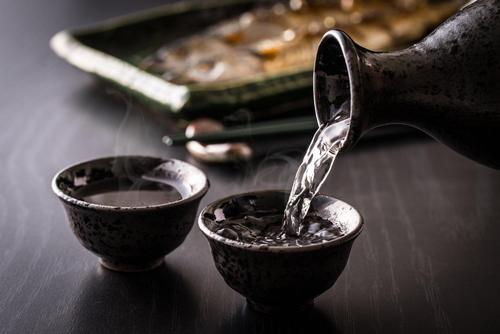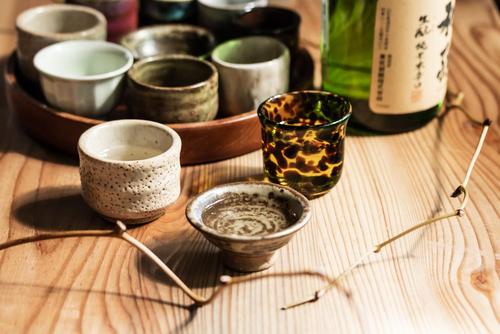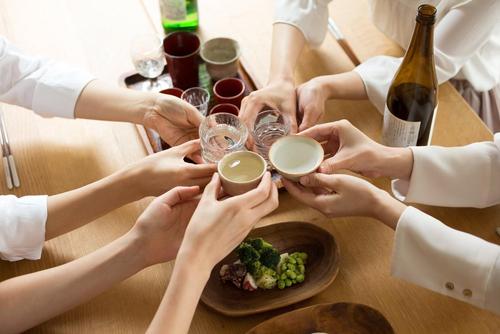Sake pairs perfectly with Japanese food and can be enjoyed hot or cold. In recent years, there has been a wide variety of sake available, including sake developed for younger generations, women, and overseas audiences.
This article explains the basics, types, and flavors of sake, a global alcoholic beverage. Use it as a source of Japanese cuisine knowledge during cultural exchanges, or as a reference when choosing your favorite sake.
Basic knowledge of sake

First, let's take a look at the definition of sake and the job of the "toji" (master brewer) who makes sake.
◇ [Definition of Sake] What kind of thing is called "Sake"?
The definition of sake is that it is made from white rice, that it is fermented and aged with koji and water, and that it is a drink that contains alcohol. Sake is made by adding koji and water to steamed white rice and letting it ferment.
Under the Liquor Tax Act, sake is classified as "seishu," which is defined as sake made from rice and that must undergo a filtering process during production.
Sake is generally referred to simply as osake, but in ancient times it was called sasa, and in English-speaking countries it is sometimes referred to as "Japanese rice wine," but nowadays simply saying "sake" is becoming more and more understood.
◇What is a "Toji" who makes sake?
Another piece of basic knowledge about sake that you should know is the people called "Toji (master brewer)." A master brewer is the person in charge of overseeing all processes related to sake brewing at a sake brewery. Incidentally, the technicians involved in sake brewing other than the master brewer are called "kurabito (brewery workers)."
The master brewers are not only responsible for overseeing the brewers, but also for managing all of the complex processes involved in sake brewing. They are also experts who possess the chemical knowledge to understand the state of fermentation of the mash. Echigo in Niigata, Nanbu in Iwate, and Tamba in Hyogo are known as the "Three Great Master Brewers of Japan."
Main types and characteristics of sake

Next, we will explain the main types and characteristics of sake.
◇Specific name sake and its classification
Among the sake sold in Japan, sake that meets the requirements set out by the Liquor Tax Act can be labeled as "Ginjo sake" or "Junmai sake." Sake with such names is called "specified name sake," and is classified as follows:
◇Ginjo sake
"Ginjo sake" is a name that can only be given to sake that has a good aroma and flavor, is made using a rice polishing ratio of 60% or less, is made using a method called "ginjo brewing," which involves slow fermentation at low temperatures, and is made from rice, rice koji, water, and brewer's alcohol.
The rice polishing ratio indicates the degree to which the rice has been polished; for ginjo sake with a rice polishing ratio of 60% or less, rice must be polished to at least 40%, and for daiginjo sake with a rice polishing ratio of 50% or less, rice must be polished to at least 50%.
◇Junmai sake
"Junmai sake" is the name given to sake made using only rice, rice koji, and water, in other words, sake that does not contain brewer's alcohol. Junmai sake made using the ginjo brewing method can be called "junmai ginjo sake" or "junmai daiginjo sake." Junmai sake made using special brewing methods other than the ginjo brewing method is called "tokubetsu junmai sake."
◇Honjozo sake
This is a name that can be given to sake that has a rice polishing ratio of 70% or less, is made using rice, rice koji, water, brewer's alcohol, etc., and has a good flavor and aroma. Sake that has a rice polishing ratio of 60% or less and is made using a special brewing method can be called "special honjozo sake."
Generally speaking, ginjo sake has a vibrant and fruity taste, junmai sake has a strong rice flavor with a mellow richness, and honjozo sake tends to have a simple and refreshing taste.
Sake is classified into four types based on its aroma and flavor.

Finally, let's explain the four types of sake that are divided according to their aroma and flavor.
◇Four types of sake flavors
The four types of sake flavors are as follows:
・Kunshu: This type of sake has a floral fragrance and a fruity taste reminiscent of fruit. Sake made using the ginjo method is considered kunshu, and has become a popular type of sake in recent years. It is recommended to drink it well chilled, like wine.
Representative fragrant sakes include "Dassai Junmai Daiginjo 39% Polished" and "Ho-o-Bita Junmai Daiginjo Yamadanishiki 50% Polished."
- Jukushu: This type of sake is aged for a long time and is characterized by its smooth, mellow taste and spicy aroma. Aged sake is classified as this type of matured sake. It can be enjoyed at room temperature, little by little, or warmed or slightly chilled, allowing you to find the temperature that suits you best.
Representative aged sakes include "Kisan Sanban Koshu 1998" and "Shoryu Horai Jungin Awa Yamada Nishiki 55, directly bottled from the brewery."
・Soushu: This type of sake has a refreshing taste that is sometimes called "dry." Honjozo sake tends to fall into this category. It is recommended to drink it well chilled in a glass.
Representative refreshing sakes include "Hakkaisan Honjozo," "Kubota Hekiju," and "Goshun Ginjoshu."
・Junshu: This sake allows you to enjoy the natural umami and sweetness of rice. You can enjoy its rich flavor at room temperature, or warm it to enjoy its mellow aroma and sweetness.
Representative junshu sakes include "Kamigame Junmaishu" and "Harushika Junmaishu."
These classifications are made to help you understand what kind of flavor each sake has and how to drink it. If you use these classifications to choose, even people who don't like sake may be able to find a type that they like.
summary

Sake is an alcoholic beverage made by adding water to rice and rice koji and fermenting it. Depending on whether or not it contains brewer's alcohol and how the rice is polished, it can be classified as a specific name sake such as "Daiginjo," "Junmaishu," or "Honjozoshu." Sake is also classified into four types based on taste and aroma: "Kunshu," "Jukushu," "Soushu," and "Junshu," and each has its own temperature and way of enjoying it.
We also introduce representative sake by type, so be sure to find the sake that suits your taste.
This article has been partially re-edited by KARUTA from an article originally published on "Nihongo Biyori."
Any unauthorized reproduction or use of the contents, text, images, illustrations, etc. of this website is strictly prohibited.
